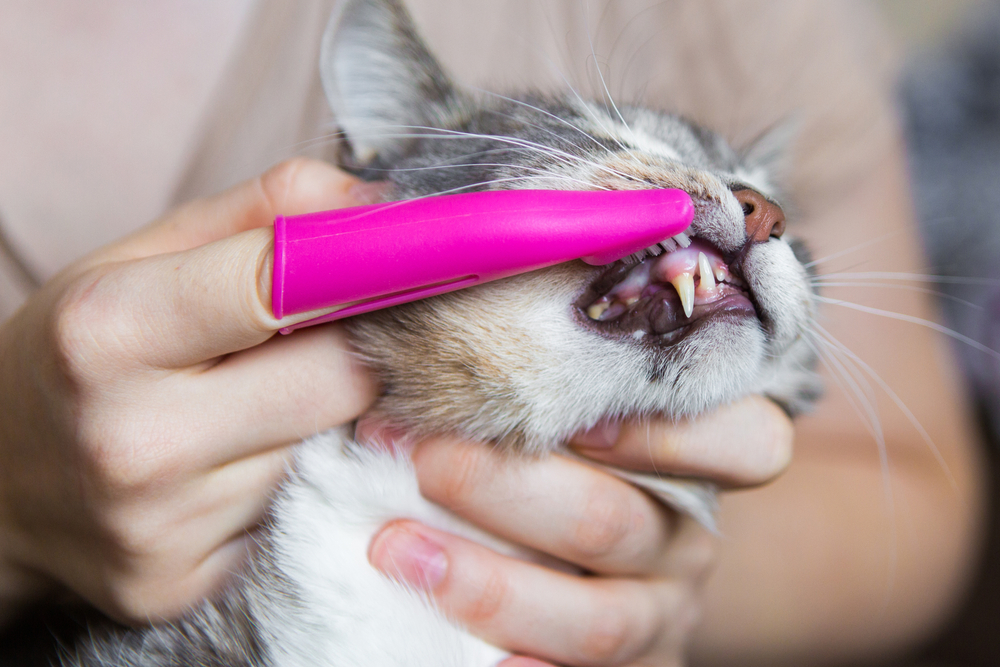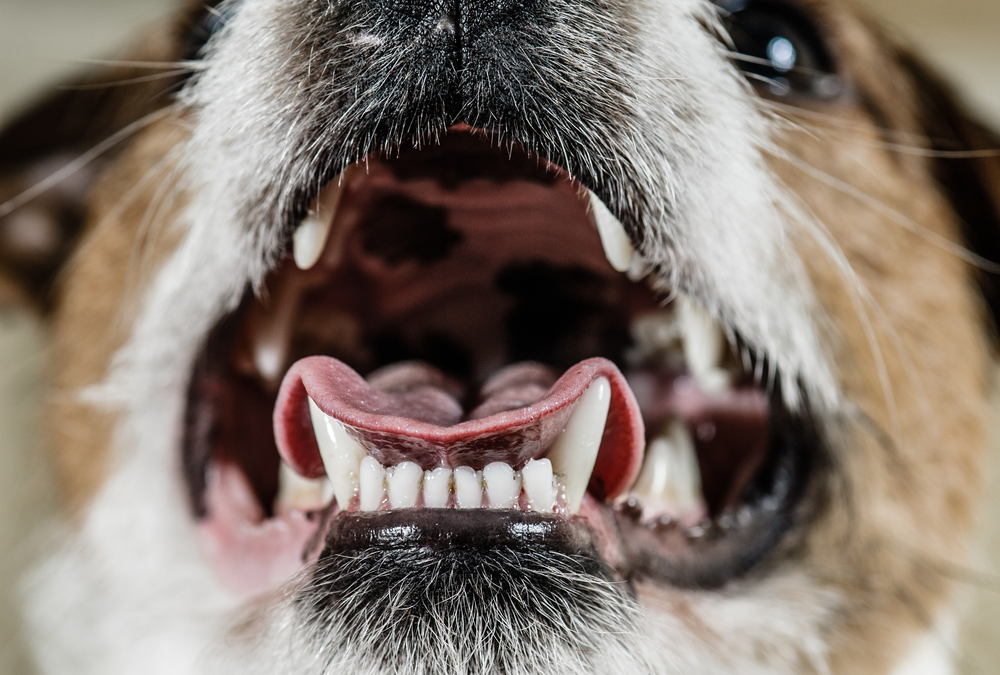Your pet’s stinky breath could be an indication of a much more serious problem. Poor dental health can cause significant problems, and our South Austin veterinarians want to ensure your pet isn’t affected. Our team at Oliver Animal Hospital answers frequently asked questions about pet dental health.
Question: What causes periodontal disease in pets?
Oliver Animal Hospital (OAH): When your pet eats, the food particles left behind attract bacteria that form a sticky film called plaque. Minerals in your pet’s saliva accumulate in this plaque, causing it to harden into tartar. Over time, the bacteria also penetrate under your pet’s gum line, damaging the supporting teeth structures. Periodontal disease progresses in four stages.
- Gingivitis — Periodontal disease begins as inflammation of the pet’s gums. At this stage, the tooth is firmly attached, and no bone loss has occurred.
- Mild periodontitis — As periodontal disease progresses, each tooth’s supporting structures begin to break down. At this stage, less than 25% of the tooth’s supporting structure is affected, and mild bone loss that is present can be seen only on X-rays.
- Moderate periodontitis — At this stage, 25% to 50% of each tooth’s supporting structures are compromised, and moderate bone loss is visible on X-rays.
- Advanced periodontitis — When periodontal disease is advanced, more than 50% of each tooth’s supporting structures are compromised, and severe bone loss is visible on X-rays. Teeth at this stage should be extracted, to prevent further complications.
Q: Are cats and dogs similarly affected?
OAH: While periodontal disease affects cats similarly to dogs, they also are affected by tooth resorptions, which typically start at the gum line, eroding the sensitive tooth tissues as the problem progresses. The exact cause of these lesions is unknown, but theories include an autoimmune response, calicivirus, and metabolic imbalances related to calcium regulation. Signs include jaw spasms, increased salivation, oral bleeding, and difficulty eating. Cats are notoriously good at hiding pain, and most cat owners never know their cat is affected until a veterinary professional makes the diagnosis. The disease progresses in five stages.
- Stage one — Only the enamel is affected.
- Stage two — The lesion penetrates enamel and dentin.
- Stage three — The lesion penetrates into the pulp chamber.
- Stage four — Large amounts of the tooth’s hard structure have been destroyed.
- Stage five — Most of the tooth has been resorbed.
Q: Why should I be concerned about my pet’s dental health?
OAH: Your pet’s dental health is important, because periodontal disease can lead to serious problems, including:
- Bad breath — The bacteria that cause periodontal disease make your pet’s breath smell bad, and their mouth likely doesn’t taste good either.
- Pain — Periodontal disease can cause inflammation throughout your pet’s mouth, leading to discomfort and pain.
- Loose teeth — As the bacteria break down the supporting tooth structures, your pet’s teeth can become loose, making eating difficult and painful.
- Tooth root abscesses — When the bacteria invade the tooth root, painful abscesses, which can also cause complications with your pet’s eyes, can form.
- Fractures — In cats and small-breed dogs, periodontal disease can cause their jaw to fracture, since the tooth roots are so close to the jawbone’s edge.
- Organ damage — The bacteria from periodontal disease can also invade your pet’s blood stream, causing damage to organs such as their kidneys, heart, and liver.
Q: When should I be concerned about my pet’s dental health?
OAH: The majority of pets older than 3 years of age have some degree of dental disease, which means you should start addressing your pet’s dental health as soon as possible, to protect them from complications.
Q: How do I know if my pet has dental disease?
OAH: Dental disease signs in your pet include bad breath, blood on their chew toys, difficulty eating, avoiding their face being touched, and facial swellings. However, many pets hide their pain and discomfort, and the best way to ensure your pet isn’t affected by dental disease is with regular wellness checks, so we can assess their dental health.
Q: How can I protect my pet from dental disease?

OAH: Regular professional veterinary dental cleanings are the best way to protect your pet, because they are the only way to effectively remove the bacteria from under your pet’s gum line, where the most problems occur. Other ways you can improve your pet’s dental hygiene include:
- Brushing your pet’s teeth — Brushing your pet’s teeth at home daily is a great way to improve their dental hygiene between professional veterinary dental cleanings. Ensure you use products made specifically for pets, since human products can be toxic to pets. In addition, go slowly, so your pet can acclimate to the procedure.
- Offer your pet dental treats — Chewing on dental treats and toys can help remove some plaque and tartar. Look for products approved by the Veterinary Oral Health Council (VOHC), which ensures they are effective.
Keeping your pet’s mouth clean is an important part of an overall health care plan for your four-legged friend. If your pet has stinky breath, contact our team at Oliver Animal Hospital, so we can assess their dental health, and determine if they need a professional veterinary dental cleaning.







Leave A Comment